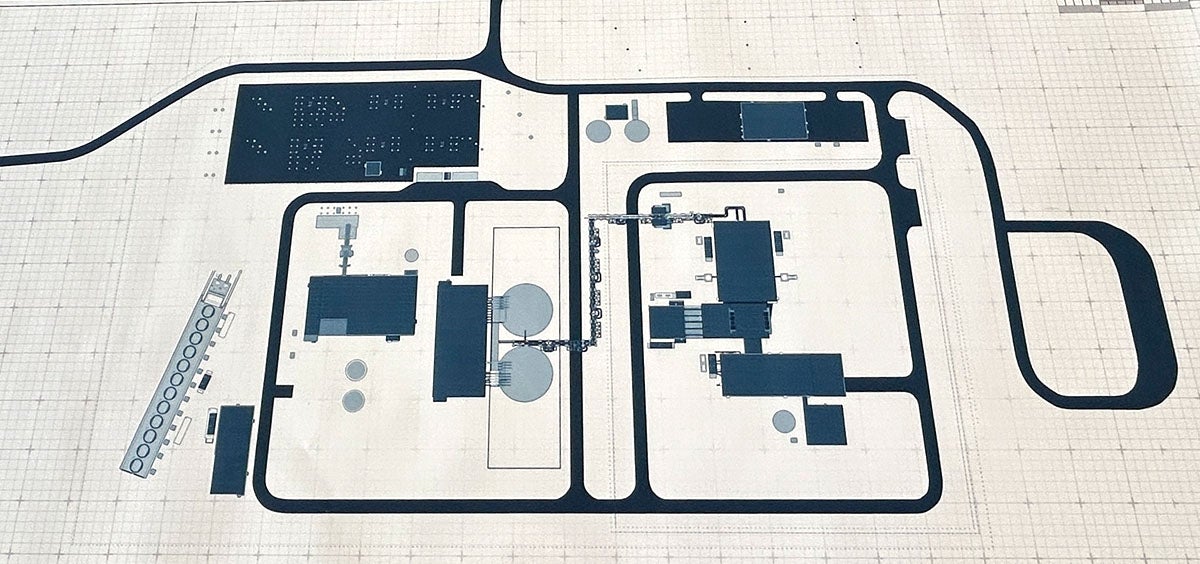Hello from Kemmerer, Wyoming! It’s been just over a year since my last visit, and I’m blown away by how much has changed.
One of the oldest buildings in downtown Kemmerer—once an opera house—has been restored and is now home to a mercantile and a bakery. Just down the street, the owners of the local coffee shop have purchased an 100-year-old building to expand their operation. A law office has opened, and city officials tell me that plans are moving forward for new multi- and single-family housing developments.
I’m thrilled to see so much economic growth happening, because Kemmerer will soon be home to the most advanced nuclear facility in the world. I just left the groundbreaking ceremony for the first-ever Natrium plant, which will bring safe, next-generation nuclear technology to life right here in Wyoming. It’s a huge milestone for the local economy, America’s energy independence, and the fight against climate change.

Today is a big one for Kemmerer—for the coal plant workers who will be able to see their future job site being constructed across the highway, for the local construction workers who will be part of a 1,600-person skilled labor force building the plant, and for the local businesses that will take care of the new workforce.
The plant was designed by TerraPower, a company I started in 2008. But my nuclear journey started several years earlier, when I first read a scientific paper for a new type of nuclear power plant.
The design was far safer than any existing plant, with the temperatures held under control by the laws of physics instead of human operators who can make mistakes. It would have a shorter construction timeline and be cheaper to operate. And it would be reliable, providing dependable power throughout the day and night. As I looked at the plans for this new reactor, I saw how rethinking nuclear power could overcome the barriers that had hindered it—and revolutionize how we generate power in the U.S. and around the world.
So, we started TerraPower, where nuclear scientists could take the concept and transform it into a reality. Since then, the amazing team at TerraPower has proven we can do nuclear better. They are leading the country—and the world—in developing safe, next-generation nuclear technology.
But that technology was just an idea in a lab and on a computer screen until today.
You can read more about the super cool science behind the Natrium plant here. Now that we’ve broken ground, the first order of business is to build the sodium test facility, which will test components and transfer the liquid sodium that will be used to cool the nuclear reactor. Construction will continue over the years ahead before the plant hopefully comes online in 2030.
For a project this big and this important to work, it takes private companies partnering with public leaders and governments. I can’t say enough good things about Mayor Bill Thek, Mayor Mark Langley, and the remarkable communities here in Kemmerer and Diamondville, who have embraced this project.
Today couldn’t have happened without the Department of Energy’s Advanced Reactor Demonstration Program, which is supporting the project with the largest single contribution the federal government has ever committed to a private project. If we’re going to solve climate change, it’s going to take courage, commitment, and partnership between the federal government and private industry, a point that Secretary of Energy Jennifer Granholm has made repeatedly. Gov. Mark Gordon and Senators John Barrasso and Cynthia Lummis have been true champions, and we’re grateful for the support from TerraPower’s investors and development partners, including Bechtel, GE Hitachi, PacifiCorp, and Berkshire Hathaway.
What’s next? The U.S. Nuclear Regulatory Commission accepted TerraPower’s construction permit application for review last month. It’s a step that sounds bureaucratic but is, in fact, a huge deal and the first time something like this has happened with a commercial non-light water reactor in more than 40 years. This step starts the review process at the NRC for the permit application—once it is approved, construction can begin on the actual nuclear reactor.
The review process will take a couple of years, so in the meantime, TerraPower will continue to build the non-nuclear parts of the facility. Construction will begin next year on the so-called “energy island,” which is where the steam turbines and other machinery that actually generate power will sit. (The reactor will eventually be part of a “nuclear island,” and the team hopes to start building that in 2026.)
While these first-of-a-kind projects can be big and risky, they are too important for our future to fail to act. I’m proud of all those who have helped ensure the most advanced nuclear project in the world gets built right here in the United States.
I believe that the next-generation nuclear power plant that TerraPower is building here will power the future of our nation—and the world. Everything we do runs on electricity: buildings, technology, and increasingly transportation. To meet our economic and climate goals, we need more abundant clean energy, not less. The ground we broke in Kemmerer will soon be the bedrock of America’s energy future. Today, we took the biggest step yet toward safe, abundant, zero-carbon energy.




